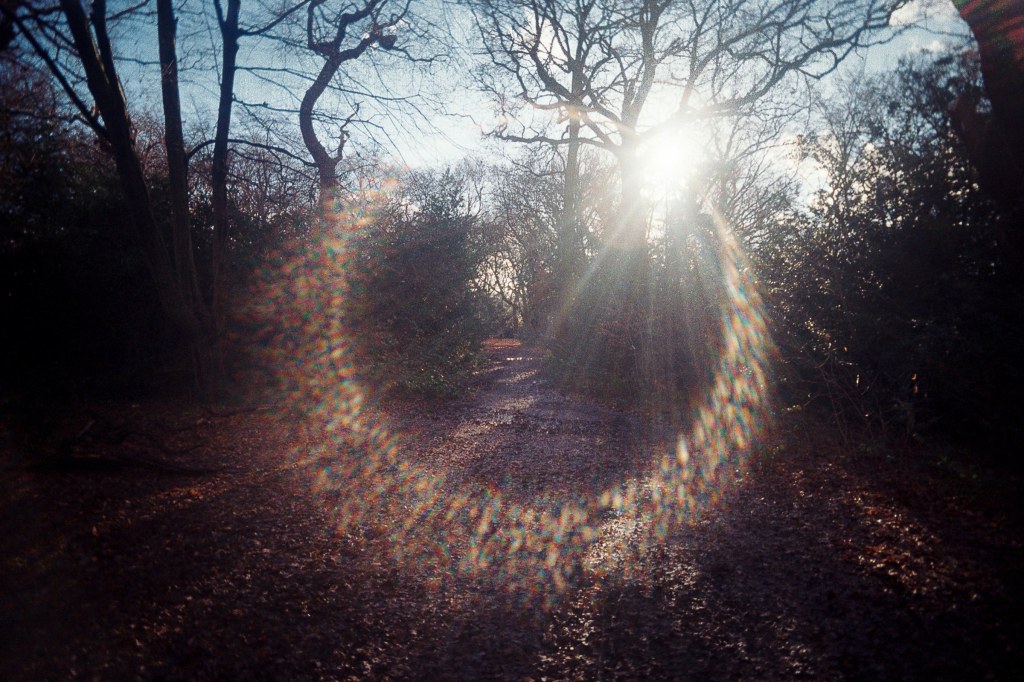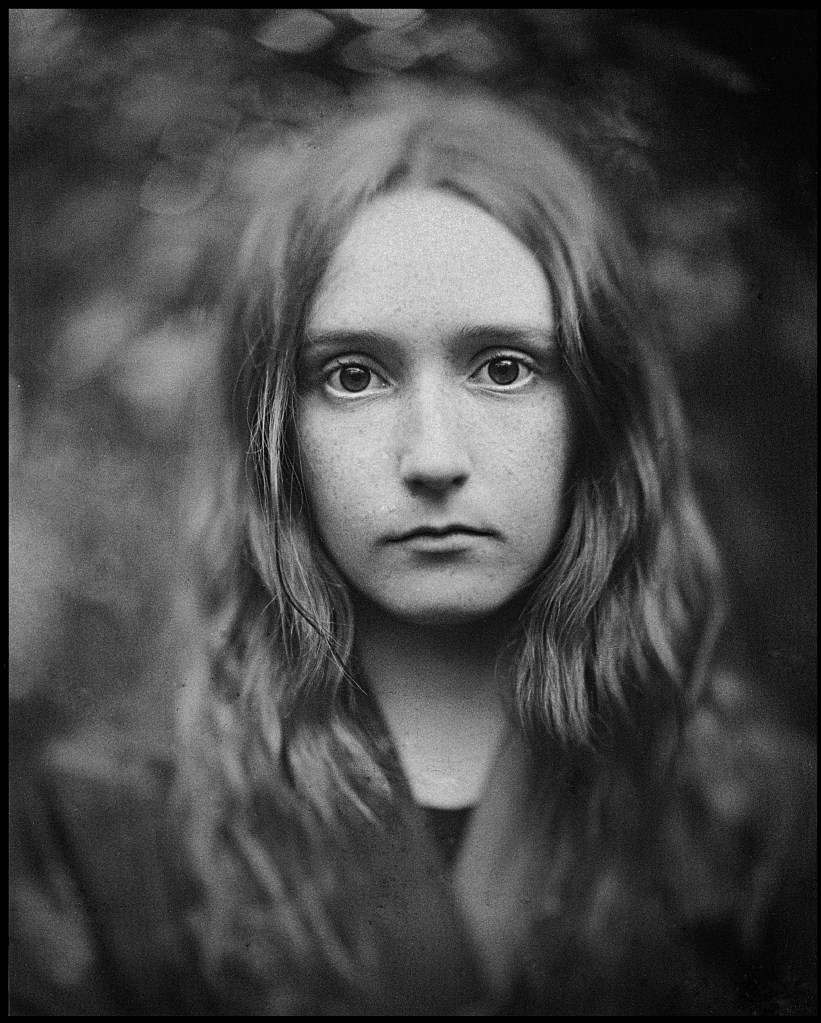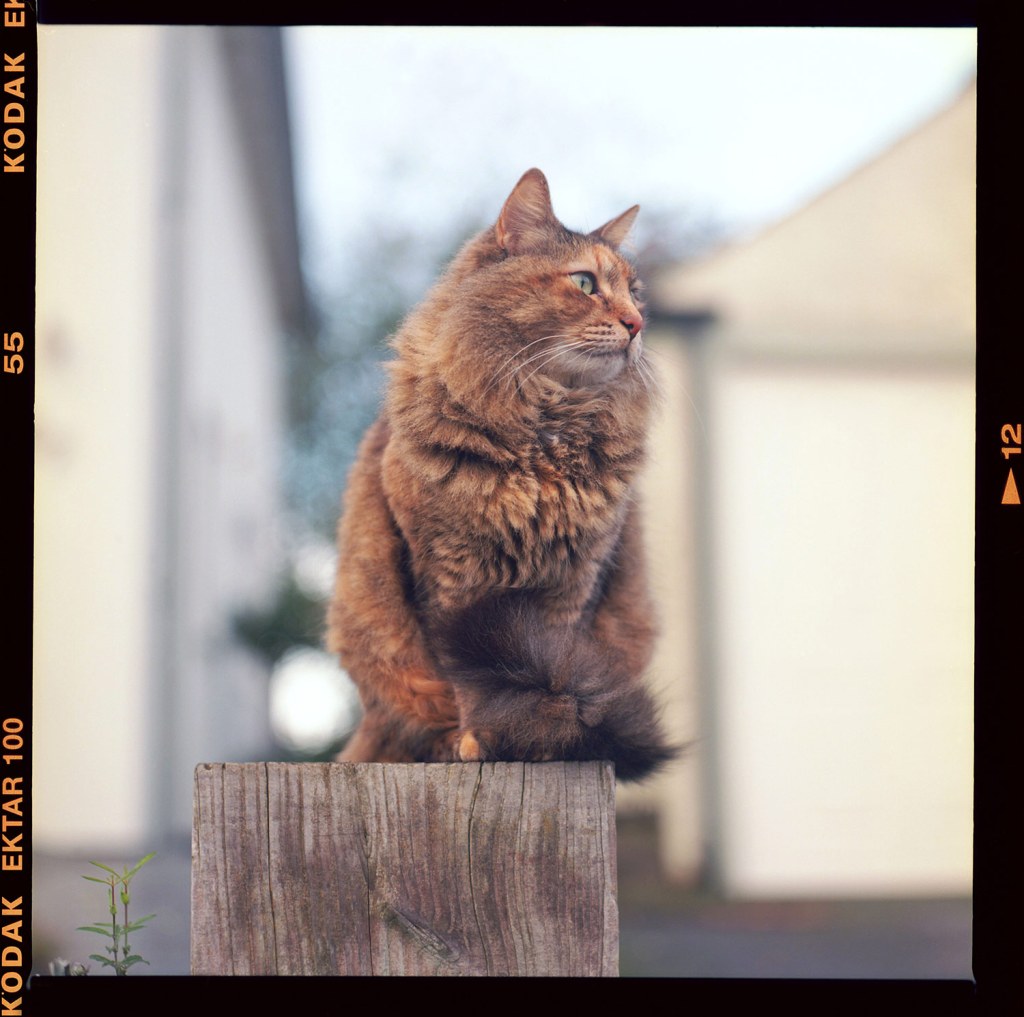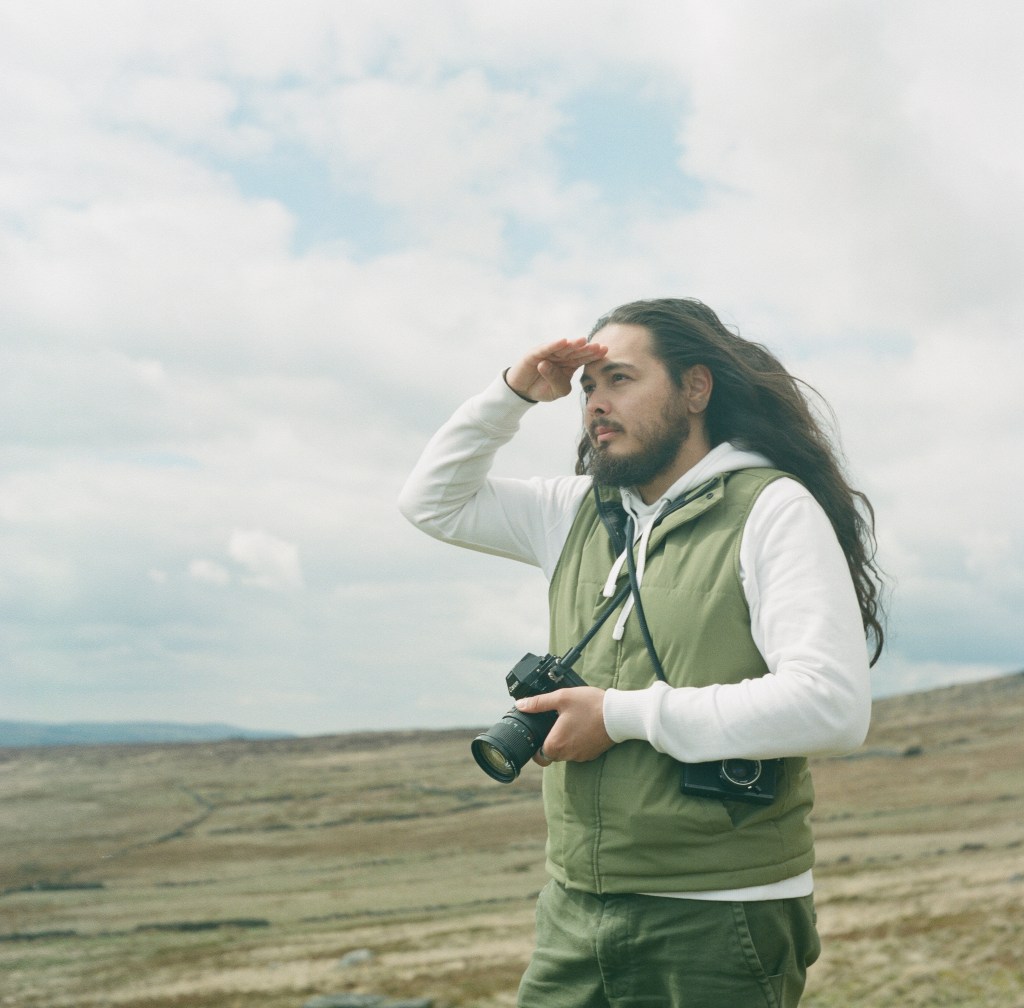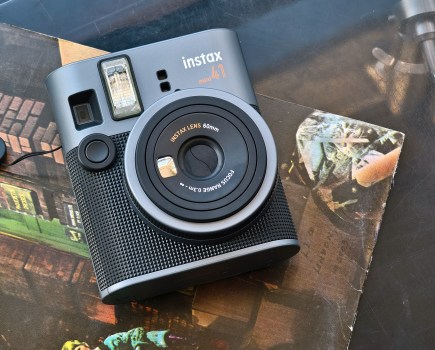Step back into the wonderful world of analogue and get creative with film. AP speaks to professional and enthusiast photographers embracing film to hear about their experience using this classic medium and their advice for success.
Fine art film photography – Paula Smith
I started photography when film was the only option. Despite embracing the digital revolution, film photography never left me. I find it more creatively satisfying. I’m in charge of the whole process from deciding on what film stock to use to loading the camera, holding it to my eye and knowing I’ve got limited shots to take and no chance to check if I got it ‘right’ in an instant. This makes me more focused in the moment and I’ve learnt to trust my own camera skills.

City of London accidental double exposure Rolleiflex Automat, Fomapan 400 developed in Ilford Ilfotec, Photo credit: Paula Smith
My first camera was a plastic 110 affair; this led to a 35mm Olympus compact, then a Canon SLR, and on to rangefinders. From there, medium format came calling and more recently I’ve been experimenting with 5x4in pinhole and an Intrepid large-format camera. We are lucky to have over 100 years of analogue legacy out there to suit any budget, taste, and desire. The variety of systems and formats is staggering. I’m trying my best to get to them all!
Currently my favourite camera is a 1937 Rolleiflex Automat. It’s enjoyable to use, looking down into the waist-level finder, giving a square perspective of the world. I’m also rarely out without a small film camera in my pocket. Either a Ricoh 500 G, Rollei 35B and recently a Reto Ultra Wide, a brand new film camera. These I keep loaded with cheaper film stocks like Kentmere, Fomapan or Fuji 200 for colour and use them for snapshots of life around me.
Paula’s top tips for film photography
Keep it simple. If trying film for the first time or it’s been a while, keep it simple. One camera, one lens, a few rolls of the same film, then get to know it and keep notes. You’ll quickly learn what you like, and it helps to be able to compare differences between film emulsions.
Most film stock is forgiving on exposure. So, when in doubt, overexpose – negative film holds highlights very well. Ilford’s HP5+ is one of the best for exposure latitude, handy if you are trying an old camera that might not be correct.
Flaws are beautiful. Embrace the ‘mistakes’, or rather, see it as serendipity! Sharpness can be overrated; light leaks can be beautiful and double exposures… well, it will likely happen at some point, and you may just be delighted with the result.
Experiment. There is lots of experimentation to be had with film. Try pushing or pulling it (when you rate the film at a different speed by increasing or decreasing the ISO setting). For me I like HP5+ rated at 1600 – it gives more contrast and I like the grainier look it gives.
Develop. Take control and become your own 1-hour mini lab by film developing at home. Don’t be daunted by the process, as it’s easier than you might imagine and there are plenty of step-by-step guides online. It’s cost-effective in the long run and is another way of being in charge of the creation of an image. I still get a buzz of excitement when I open the tank and pull out my negatives.
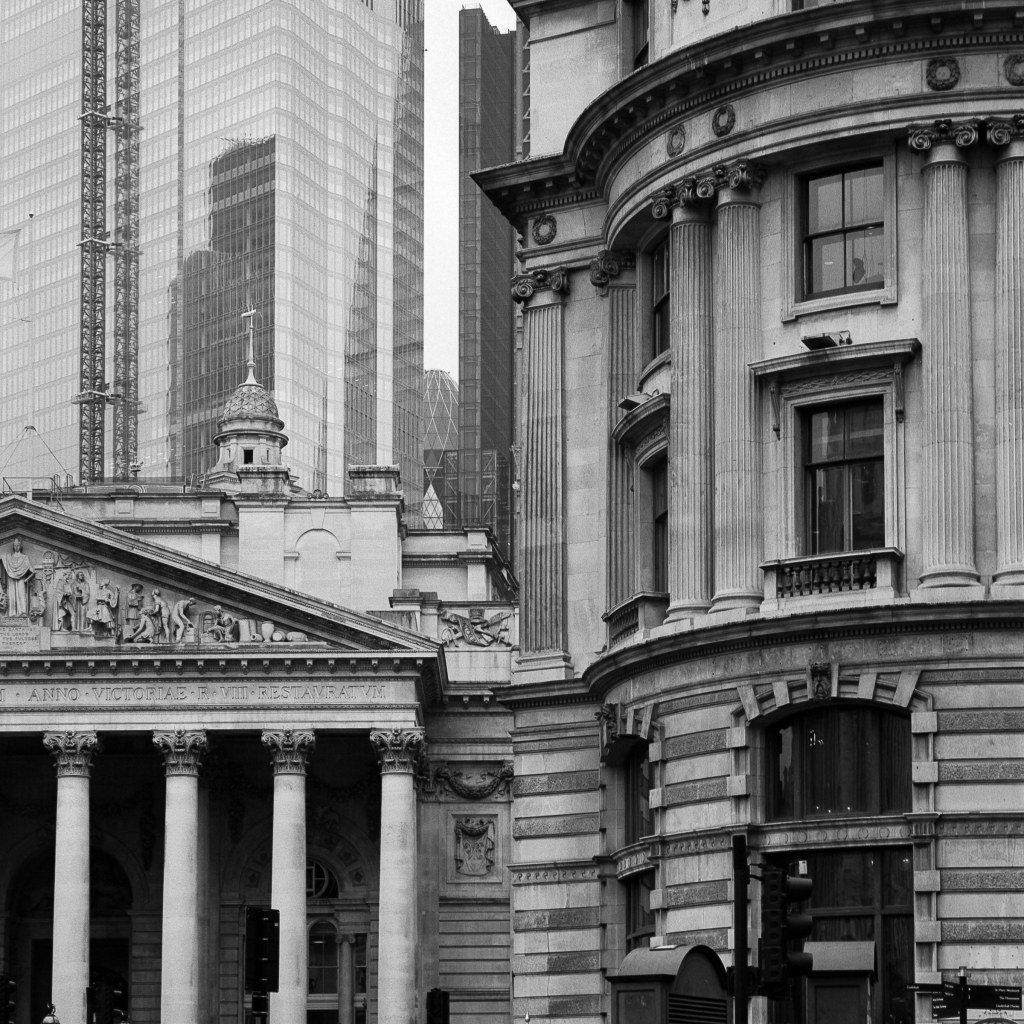
City of London Bronica SQ Ai, Ilford HP5+ rated 1600, developed in Ilford Ilfotec HC, Photo credit: Paula Smith
About Paula:
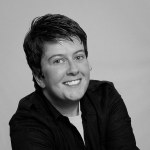 Paula is a London-based freelance photographer. She shoots film daily to capture personal projects, family life and the world around her.
Paula is a London-based freelance photographer. She shoots film daily to capture personal projects, family life and the world around her.
See more of Paula’s work on her website and Instagram.
Film photography portraits – Cole Watkins
I discovered photography in 1976 through a friend’s dad, Peter Fredricks, the senior photography lecturer at Southend School of Art. I was in a dead-end job, but meeting him and seeing his work was inspiring, and led me down another path. I started in advertising but eventually moved into portraits and, later, creative portraiture.
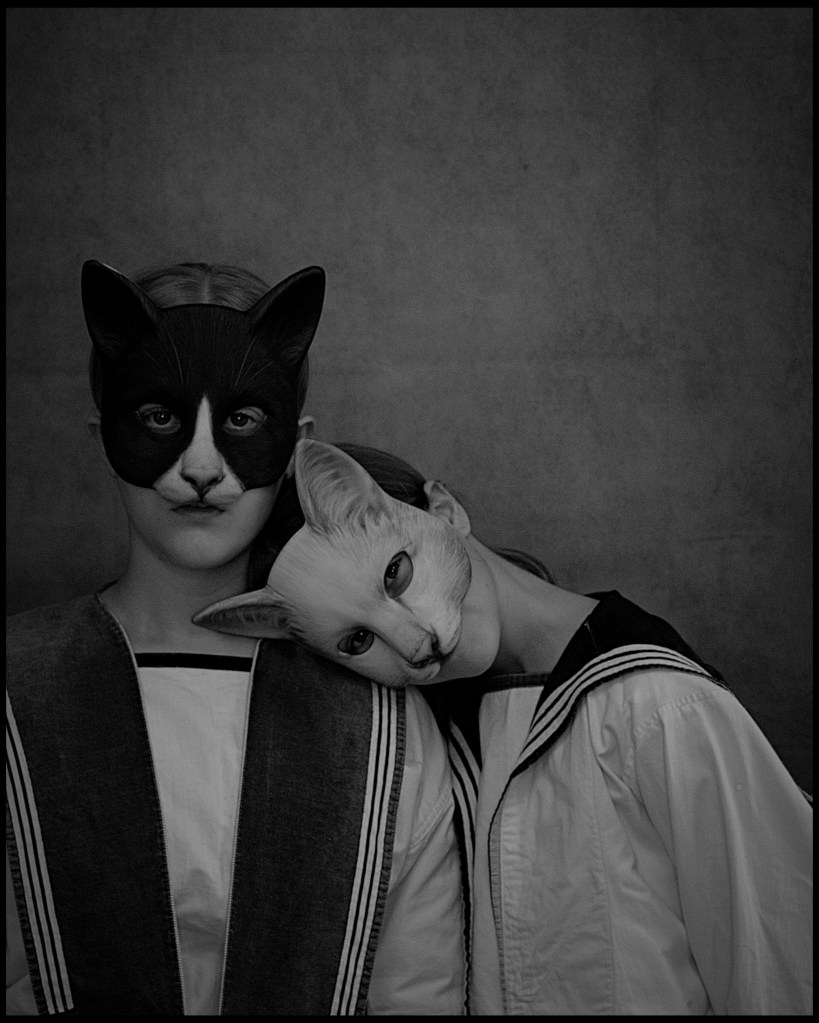
The Girls as Cats, Presley and Niki Dodwell, Pentax 67 and 105mm lens, FP4, Photo credit: Cole Watkins
When I organise a shoot, every element is planned, so that on the day I am ready to go. I consider my work ‘creative portraiture’ as I don’t capture people as they are, I build a story and a world around them.
I shoot film because I find it inspirational. It’s analogue, it’s tactile, it’s somehow more real. I always think of Peter Fredricks’ favourite poem, Rubaiyat by Omar Khayyam. He talks about people as dancing shadows on the wall, transient and ephemeral. I like to think that we are capturing these fleeting shadows with the alchemy of light on silver.
My favourite camera is a Pentax 6×7 because it has a focal plane shutter, and the lenses are really fast, which gives me the narrow depth of field that I want. My favourite film is Ilford FP4 in ID11.
Cole’s top tips for film photography
Experiment with kit. Don’t be afraid to modify your equipment, or to use non-photographic lenses. I use aerial reconnaissance lenses and projector lenses. I bought a 140mm F1.8 Russian projector lens, which I adapted to my camera by sawing off the back, so it can be nearer to the focal plane, and I use a helicoid screw to focus it. I then bought adapters so that it fits on all my cameras, including my Nikon F2, Pentax 6×7 and even my digital Pentax 645z. This gives me a depth of field for portraits of >5mm, so it must be pin-sharp. You can see its use in the below photo of Marnie, where I had to use a head brace to keep her still!
Take it slowly. Always carefully consider the image you have before pressing the shutter. You are capturing a single moment, so make sure that moment is worth capturing. Don’t be a machine gun photographer. I only get ten shots per film, so need to make every one count. So, before you press the shutter, reflect on the framing, the angles, the light – is it worth taking? I very rarely crop photos; if you want to be closer, move closer and check your framing.
Always use a tripod; it will slow you down. You’ll find yourself thinking about the image more – you can look around the viewfinder for extraneous details and check your model for issues, before pressing the shutter. It will also instantly make your photos sharper.
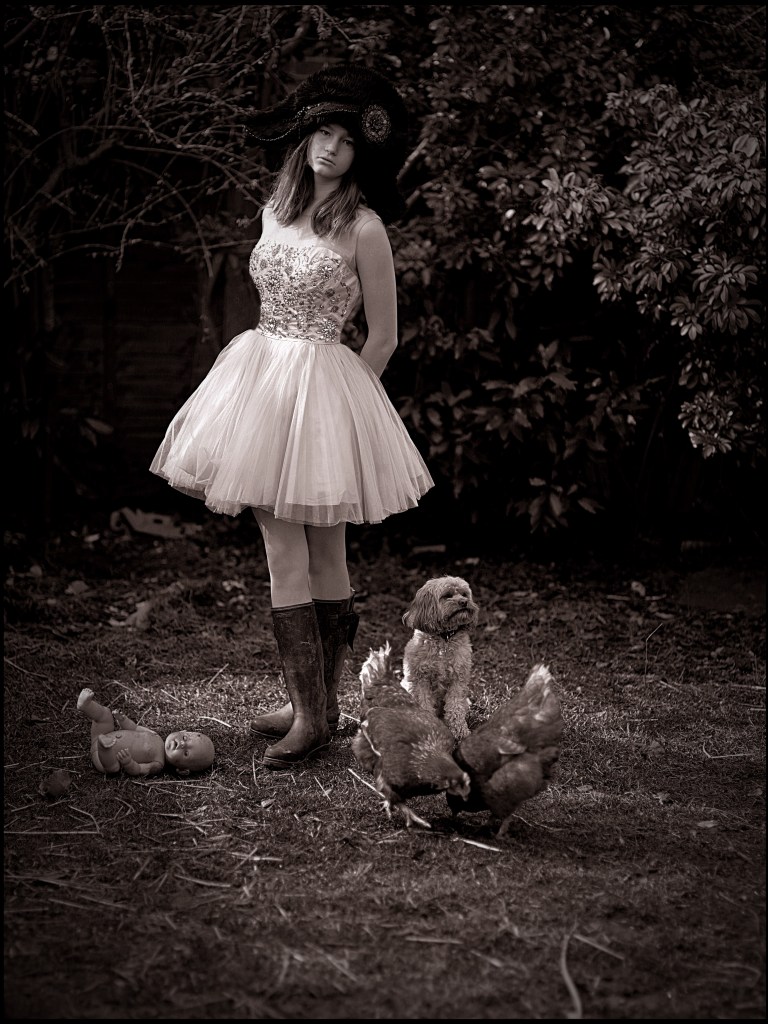
Evie Parry with Hens, Pentax 67 and 105mm lens, Ilford FP4 Photo credit: Cole Watkins
About Cole:
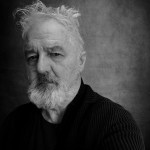
Cole Watkins studied at the Southend School of Art & Design 1976-1980. He won the Essex Photographer of the Year and the Fashion and Marketing Prize in 2021 and works out of his studio in Westcliff.
See more of Cole’s work on his website and Instagram. Contact: [email protected]
Medium format film photography – Holly Hang
My photography journey started when I was in my pre-teens. I would borrow my parents’ Nikon RF2 35mm point-and-shoot camera, snapping away at daily life and family holidays. I now own the camera.
I love film because it allows me to slow down and think about the subject, framing and camera settings than if I were to shoot digitally. Not exactly knowing how an image will turn out until you finally get the roll developed is part of the thrill. An image shot on film also looks more aesthetically pleasing.
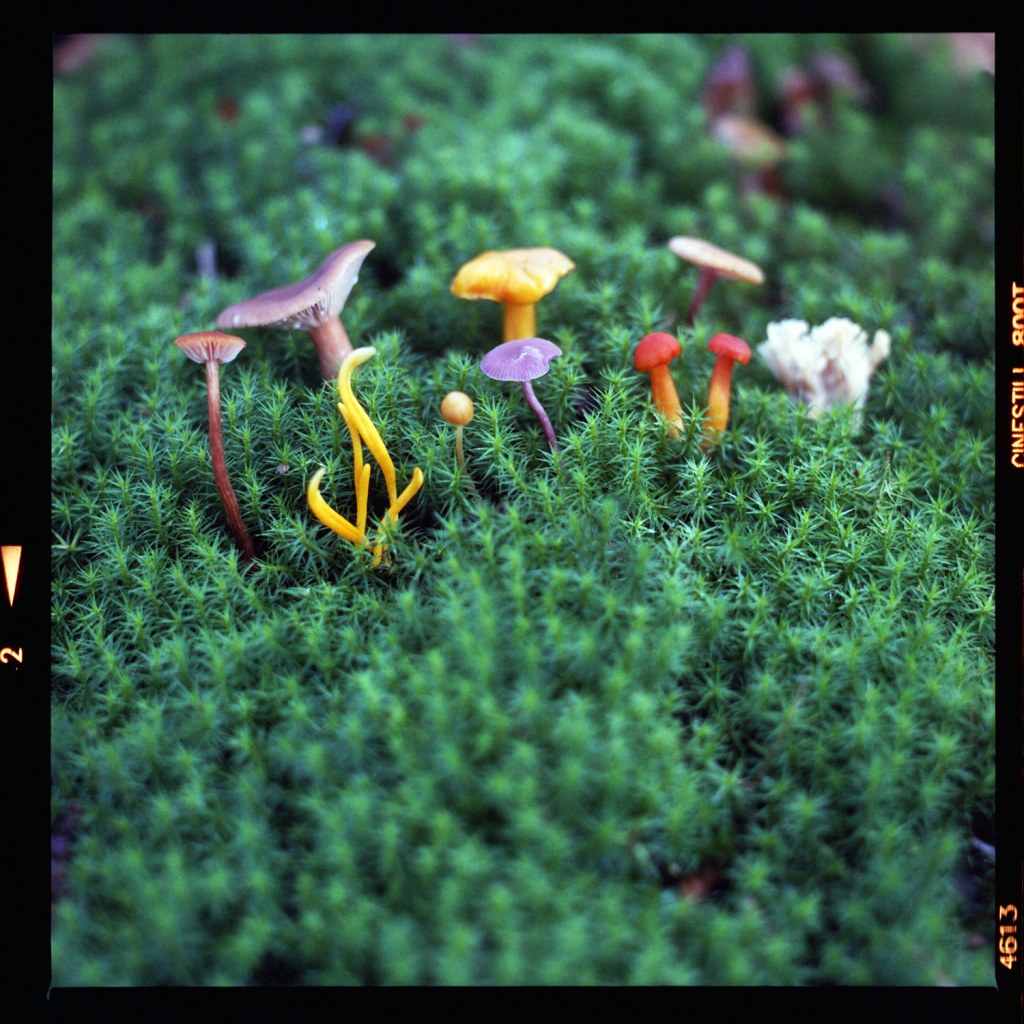
Mushroom Medley, Mamiya C3, Mamiya-Sekor 105mm f/3.5 lens and CineStill 800T, Photo credit: Holly Hang
I’m fortunate enough to have a varied camera collection. I love all my cameras but if I had to pick favourites, it’s the Mamiya C3 TLR and Hasselblad Super Wide Angle (SWA) – both medium format as I prefer the larger 6×6 negative in comparison to 35mm. The C3 was the first professional medium-format camera I purchased while studying at university. After its namesake, the SWA has a fixed 38mm biogon (wideangle) lens. Both cameras are perfect for capturing my go-to subjects – nature and animals.
My favourite film stocks are Kodak Portra 400 and CineStill 800T. When I started shooting with medium format, you had the choice of Portra 400NC and 400VC. I preferred VC, which was vivid colour, but Kodak eventually stopped making both and just produced Portra 400. I like today’s Portra 400 as it has lovely warm tones. I enjoy shooting with CineStill 800T because it’s so versatile and great in low light/at night as well as daylight conditions.
Holly’s top tips for film photography
Try shooting a high ISO film stock in daylight. I tend to shoot CineStill 800T as I find it produces vibrant colours. I will shoot it at box speed, set the aperture to a high setting and shutter speed to a fast setting if it is very sunny with no cloud cover, to eliminate an overexposed image. Example settings: ISO 800, f/22 and 1/500.
After getting my film developed at my preferred film lab, I scan the negatives at home as I find it good practice and
I like to include the film borders. To do this, I place the negative directly onto the glass of the scanner, so you won’t be needing the scanning mask. Sometimes scanning a negative this way can produce ‘Newton’s rings’ onto the scanned image, which is a pattern created by the reflection of light between two surfaces – the glass part of the scanner and the negative. To keep the negative flat and reduce/eliminate the issue, I place several heavy books on top of the lid of the scanner or place a piece of glass on top of the negative.
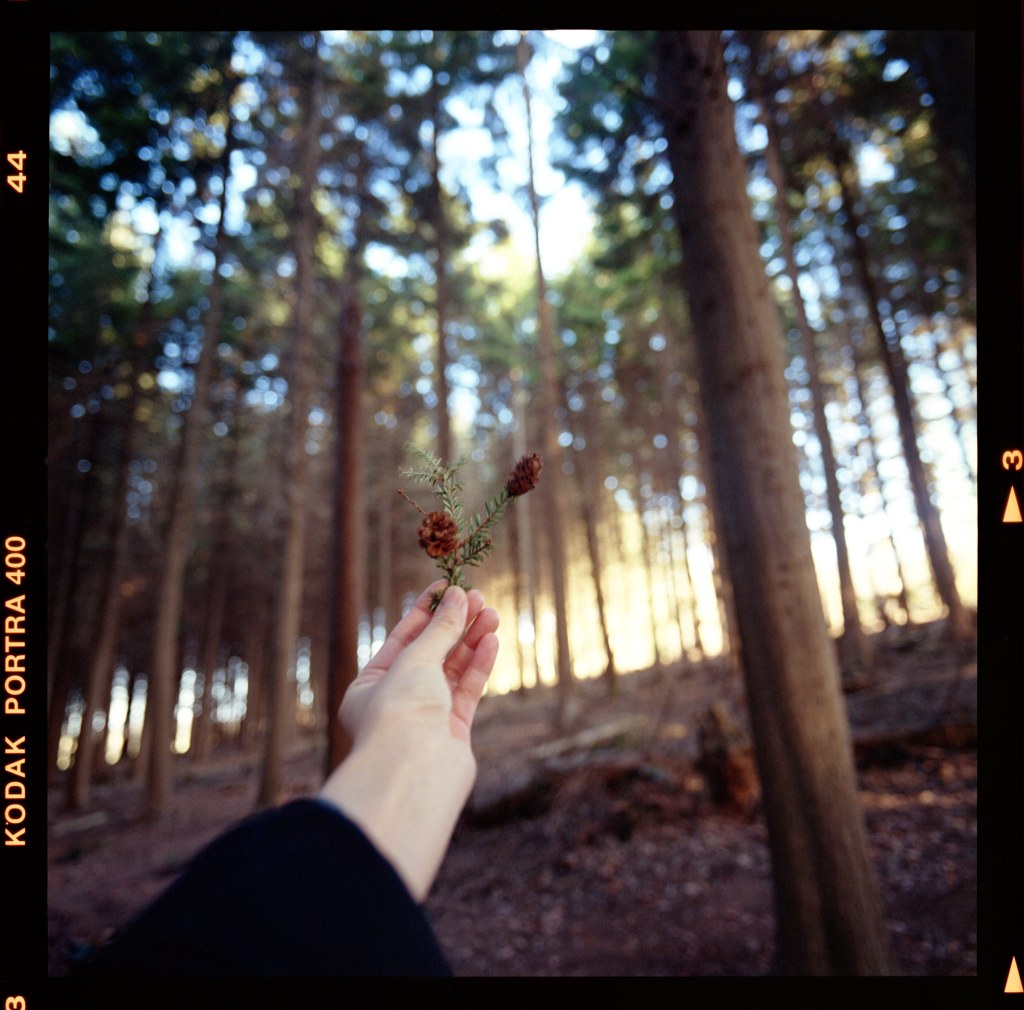
Pine one, Hasselblad SWA, Zeiss Biogon 38mm f/3.5mm lens and Kodak Portra 400, Photo credit: Holly Hang
Check out our introduction to medium format film photography.
About Holly:
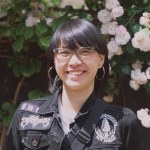
Holly works at a health tech company and is a freelance photographer. She has a BA (Hons) in Photography from UCA and has been working on a foraging photography project since 2020.
See more of Holly’s work on her Instagram.
Black and white film photography – Peggy (Camera Go Camera)
I am old enough to have started my photography journey using film, a Zenit 11 being my first camera. Like most people, I switched to digital photography in the early 2000s. Then around 2015, one of my friends showed me his Nikon FE. I loved the sound it made and the quality of his photos. I had forgotten how great film cameras were. So, I looked for a cheap one for myself. At the time, I was living in Japan, and I knew nothing about film cameras.
I really wanted a Leica but couldn’t afford one. I did some research and found the Fed 2 was a Russian copy of a Leica, so I bought one. It was the first film camera of my return to film.
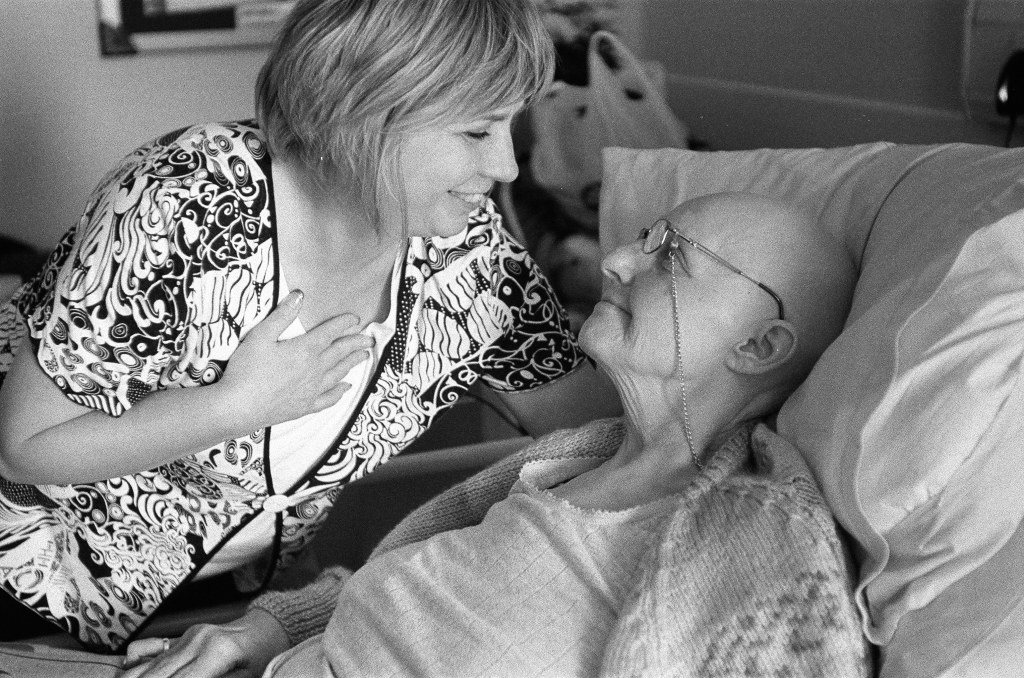
Moments of love – That’s my sister, she was always aware of the camera and made sure to look decent, with no cleavage!
Fed 2 with an Industar 26M lens. The film was Ilford HP5 plus, Photo credit: Peggy
I had only put one film through it when I got an email calling me back to the UK. My mum, who was a bit sick when I left, had suddenly got a lot worse. A few days later, there I was sitting by her hospice bed, holding onto my Fed 2. I got into the habit of carrying the camera almost everywhere. The camera became my comfort blanket. The photos I took during this time were very poignant. Out of all the cameras I have tried, the Fed 2 is still one of my favourites. Combine it with a reliable, fast monochrome film such as Ilford HP5, and it is the perfect set-up for me.

Cappuccino Time – Mum was always ready for a cappuccino, well the fluff on top anyway
Fed 2 with an Industar 26M lens, Ilford HP5 Plus Photo credit: Peggy
Peggy’s top tips for film photography
You don’t need loads of cameras, just one that you love. A lot of film photographers suffer from GAS (gear acquisition syndrome), having a need to get more and more film equipment. Interestingly, those of us around when film was the norm seem to suffer from being overly reminiscent. We re-buy cameras we had in our youth even though we originally let them go for better models. If you can learn to love the camera you have now, you will save yourself a fortune in the future.
Get comfortable using your camera and learn how to use it without too much thought. A great accompanying skill is the ability to estimate distances. I know a great street photographer who rarely looks through his viewfinder to focus. He uses an in-built zoning system that he has honed over the years. Then he walks around with his camera at his waist and shoots incognito.
Film may be expensive but not taking the shot might cost you more than money. Take photos of the people you love and if someone in your family asks to take your photo, let them. One day, it might be all they have, and they will treasure it.
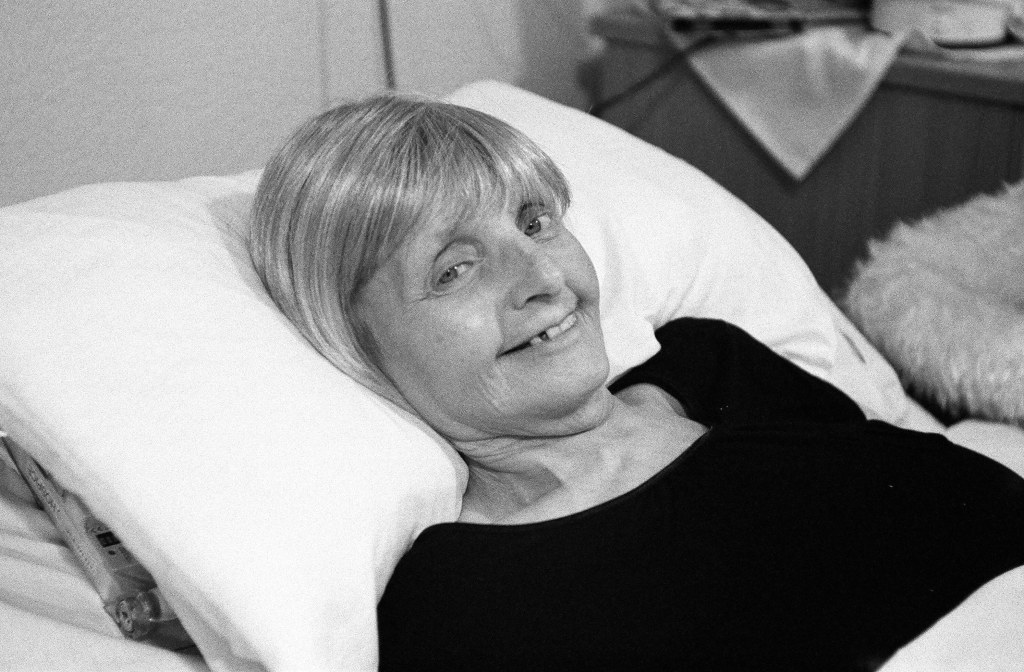
To wig or not to wig – Mum loved putting her wig on but often didn’t feel well enough. Fed 2 with an Industar 26M lens, Ilford HP5 Plus, Photo credit: Peggy
About Peggy:
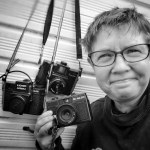 Peggy is a primary school teacher who plays with film cameras in her spare time. She mainly looks for junk cameras that she can fix or cameras she hasn’t used before. Peggy has tried over 400 different film cameras and many different film types.
Peggy is a primary school teacher who plays with film cameras in her spare time. She mainly looks for junk cameras that she can fix or cameras she hasn’t used before. Peggy has tried over 400 different film cameras and many different film types.
Her film photography blog has been running for seven years and you can see all the cameras she has used and the experiments she has tried on her website or see more of her work on Instagram.
Fashion and editorial film photography – Mandyleft
I have always been intrigued by film photography and then one day a TLR (twin-lens reflex) camera came into my possession. I put a roll of film in it and there was no way back, I was absolutely hooked. Since then, I have been able to experiment with different cameras, but I always seem to gravitate towards TLRs, especially within the Rollei family. I really like the square format and I think the shooting experience is an absolute pleasure. They are great for taking portraits, but also for street photography as they are not intrusive. You can take your time to compose an image and people generally don’t even notice it. However, a TLR camera will inevitably draw some attention because they are so beautiful and distinctive!
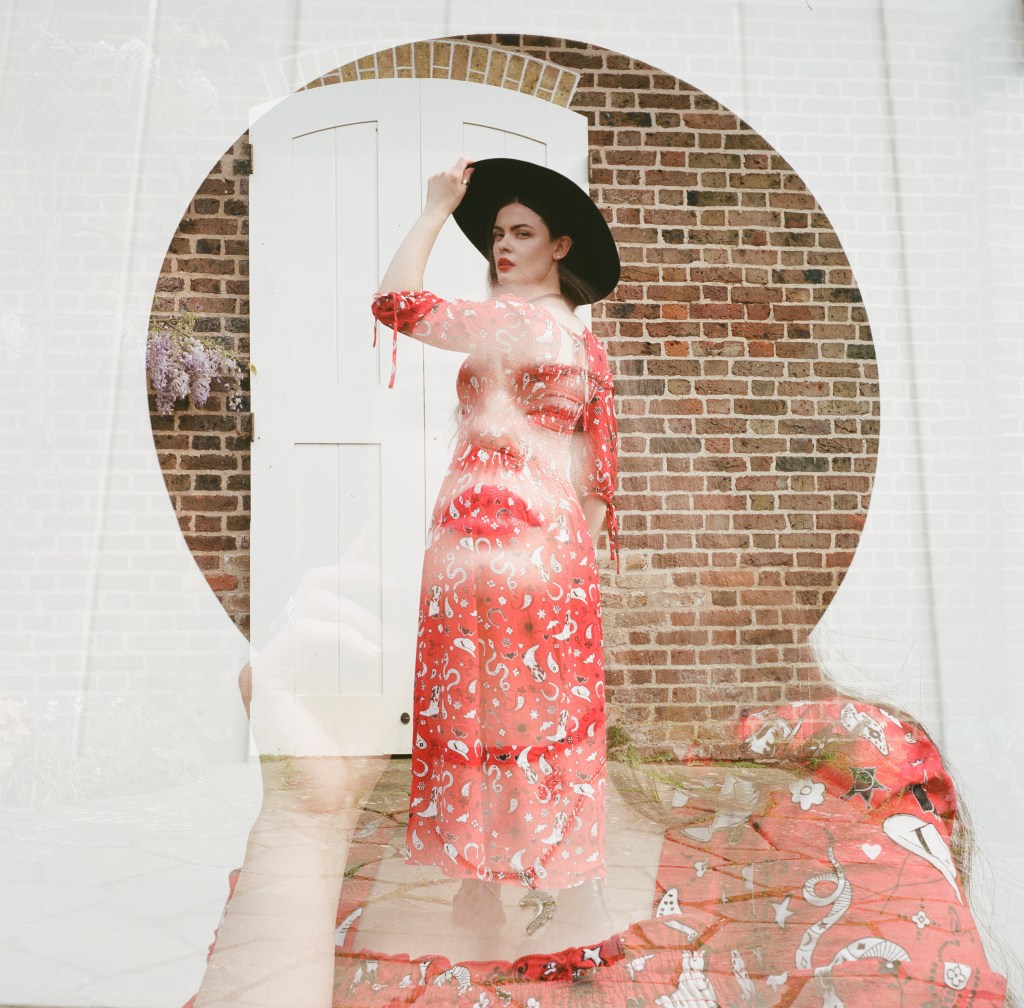
Double Georgia. This is a double exposure Rolleicord Va with Portra 400, Photo credit: Mandyleft
In terms of the type of film that I prefer, I shoot both fresh and expired film. I frequently shoot Kodak Portra 400, but recently I have started to shoot 35mm movie film like Kodak Vision3 because of that cinematic look that you get. For black & white, I usually go for Ilford and my favourites are Delta 400 and XP2.
I have to say that one of the most interesting aspects of analogue photography is the community. For me, it all started the day I joined a #sheheartsfilm photowalk. It was such a fantastic experience that I started to attend other photowalks organised by Analog Meetups in London. I have met an amazing group of inspiring and supportive photographers, thanks to them, and now we have formed a collective called OnlyFilms Project!
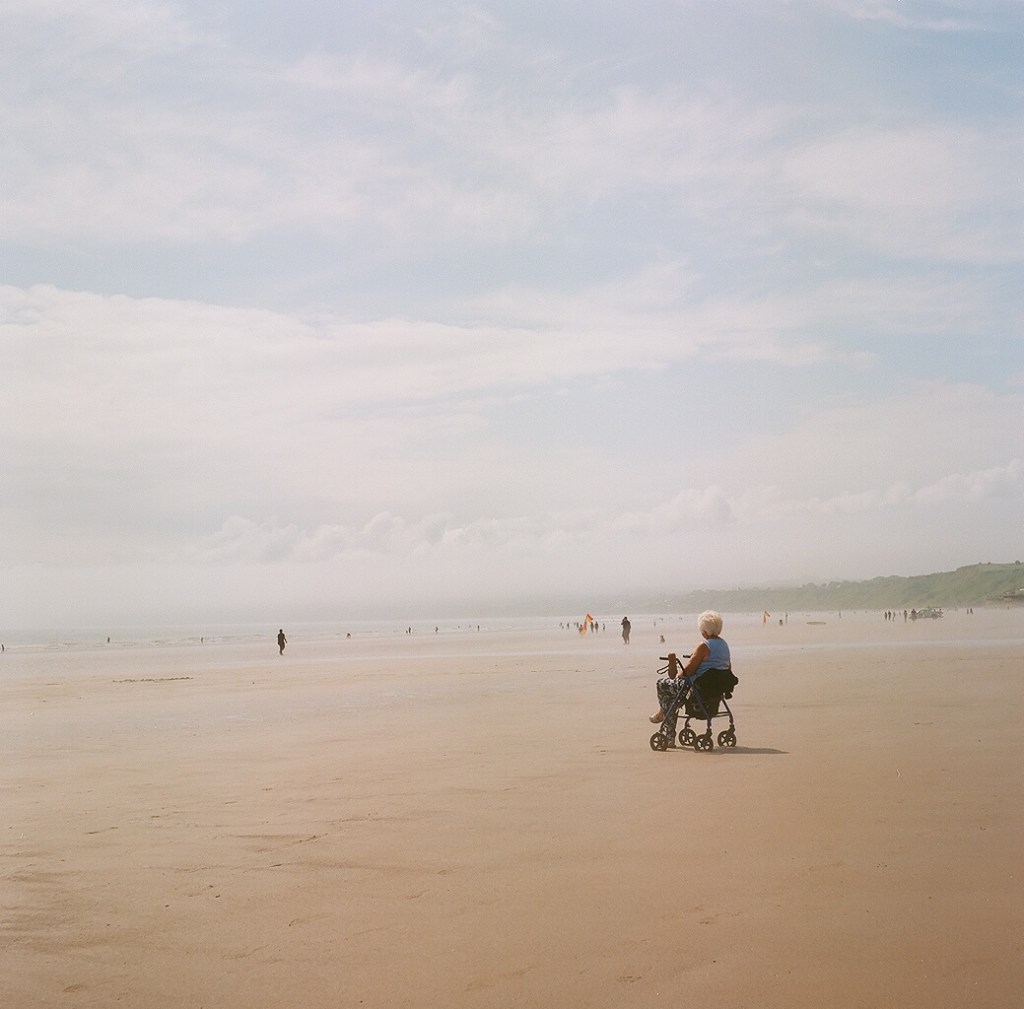
Those Days Gone By. This was shot in Filey on a Rolleicord Va with Ektar 100. Beautiful tones, Photo credit: Mandyleft
Mandy’s top tips for film photography
Adapt your film choice to the conditions that you have. I tend to think of the look that I want and then choose the film to shoot accordingly. For example, if I am in the city centre at night, I will probably decide to shoot tungsten film. Or if it’s a cloudy and dull day, I like to shoot b&w to focus on shapes and textures. For a very bright summery day at the seaside, I would recommend shooting Ektar 100 for its highly saturated colours. For portraits, you can’t go wrong with any of the films in the Kodak Portra family, but Kodak Gold 200 in medium format is stunning. Of course, at the end of the day, it all depends on your type of photography and on the look that you personally like the most. But I always recommend experimenting more and having fun with it.
Get involved with the analogue community. Joining a photowalk or attending events for analogue photography fans is a great way to meet other people with the same interests. It’s not only an opportunity to be able to see a wide variety of cameras but also to learn and get the best tips from other film photographers with different experiences. You might think that this type of thing is not for you but try it once and
I promise you will change your mind!
Print your work. There is nothing like holding an image you shot in your hands. It’s a fact!
About Mandy:
 Mandyleft is a film photographer and analogue camera lover who is passionate about taking portraits, with a focus on fashion and editorial photography. Some of her most recent work involves documenting artists. She leads the collective OnlyFilms Project.
Mandyleft is a film photographer and analogue camera lover who is passionate about taking portraits, with a focus on fashion and editorial photography. Some of her most recent work involves documenting artists. She leads the collective OnlyFilms Project.
See more of Mandy’s work on her website and Instagram.
Documentary film photography – Jumi Popoola
After spending several years working in front of the lens as a presenter and performance poet I decided after lockdown to explore my visual artistry through photography. I was eager to explore everyday stories and the nuances within our human experiences through a medium that mirrored the vulnerability and authenticity that I sought to document.
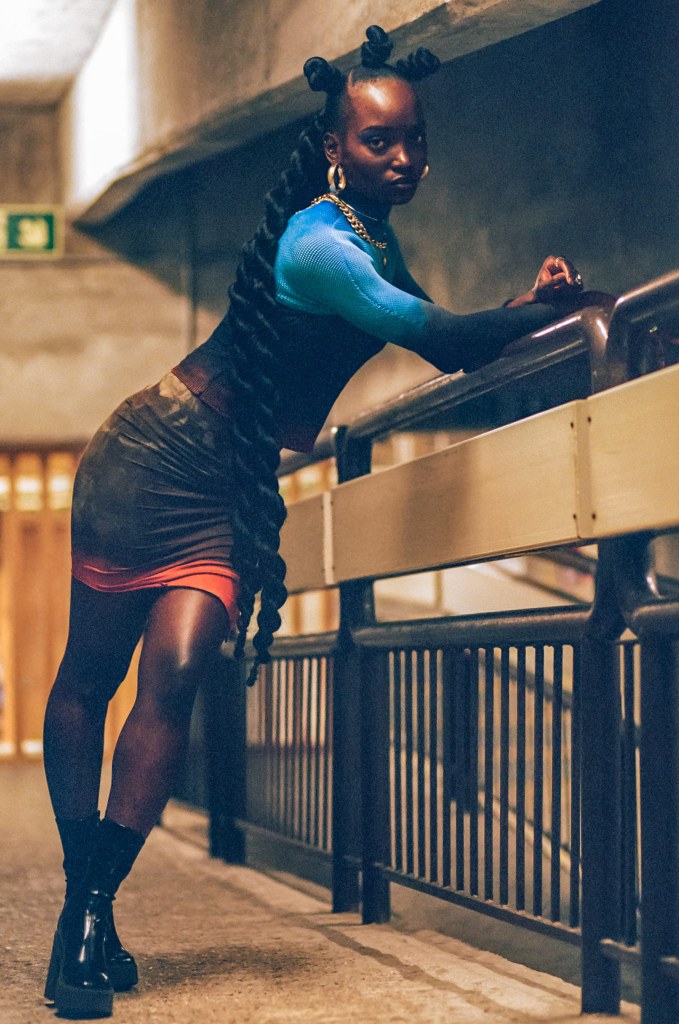
Peckham Princess – 35mm editorial with @thevenusxxi. Model: Nifah, Hair: Aminata Kamara, Creative Direction: Henry Robinson and Aminata Kamara, Portra 800, Photo Credit: Jumi Popoola
After following Henry Robinson on Instagram, I reached out for a photowalk where I learnt he shot on film and immediately picked up my first 35mm camera, a Fuji STX-2. Mostly self-taught, I hit the streets allowing natural moments to find me, which helped with my events and music photography skills as well as curating scenes with strangers helping my future environmental portraiture photography. I have been fortunate enough to have had counsel from film greats such as Eddie Ochere (UK), Dan Rubin (US/UK), Holly Cato (UK) and Henry Robinson (JA).
Film photography has allowed me to explore medium format – Mamiya RB67, a fully modular mechanical beast. Outside of my Fuji STX-2 I have enjoyed using the Mamiya RB67 and my dream camera, a Fuji GSW690II and large-format photography thanks to Intrepid. I don’t particularly have a favourite film stock, however I am partial to CineStill 800T, Kodak Gold 200 and Ilford HP5 Plus 400. Both CineStill 800T & Ilford HP5 Plus 400 are great in a variety of different low-light settings, especially with the addition of a contrast filter.
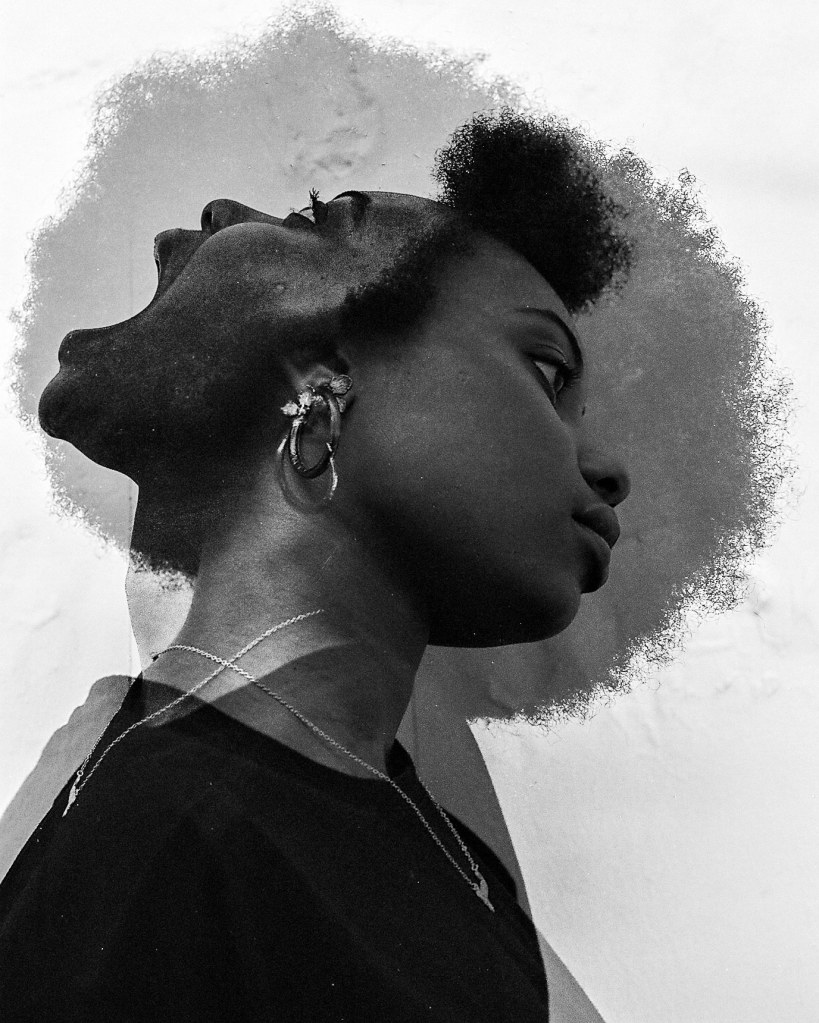
Silent Screams of the Violently Strong – 35mm editorial portrait, 2021. Model: Cyan, Ilford Delta 3200, Photo Credit: Jumi Popoola
Jumi’s top tips for film photography
Shooting on film is a lot simpler than people think. Outside of understanding how aperture and shutter speed work together and of course judging your scene and knowing what ISO your film should be, my biggest tip would be to get into the darkroom to develop and print your film. Challenge yourself to try this with your first five rolls of film.
Learn Darkroom printing. Film photography affords the photographer more control over the outcome of an image. The darkroom isn’t scary, it’s like cooking – there’s a recipe you follow, and you can literally do it anywhere! SW Darkroom is a great space for all to learn, while Lakeside Affordable Darkroom in Woolwich is specifically a space aimed at women and non-binary folk to learn. They offer affordable workshops on how to develop film, print and explore alternative printing techniques. This will open a whole new world for your practice – personally I love cyanotype printing, which is another way to explore how you present your final image.
Experiment. Stick a cheap roll of film (I know, the words cheap and film don’t go together) and commit a few frames to shooting portraits, botanicals, fast motion action, low-light scenes and bright, clear scenes. Experiment and always look for where the light and shadows meet and dance. Your eye will find the shapes and stories it’s drawn to in your own style, just trust yourself enough to try, fail and succeed.

Tobi Nwigwe – 35mm concert photography at KOKO, London 2022, CineStill 800T, Photo Credit: Jumi Popoola
About Jumi:
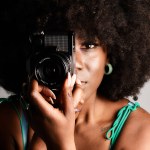 Jumi is a British-Nigerian translating her observations, introspections, and storytelling since October 2021. Jumi’s practice involves an instinctive and curious approach to vulnerability. From music photography, commissioned documentarian photo essays to fashion editorials – exploring the corners of our society and similarities in our humanity through analogue photography.
Jumi is a British-Nigerian translating her observations, introspections, and storytelling since October 2021. Jumi’s practice involves an instinctive and curious approach to vulnerability. From music photography, commissioned documentarian photo essays to fashion editorials – exploring the corners of our society and similarities in our humanity through analogue photography.
See more of Jumi’s work on her website and Instagram: @jumi___p and @blackdaffodilphotography.
Further reading on film photography:
- How to do film photography on a budget
- How to check if a film camera works
- Essential guide to darkroom printing
- How to make a pinhole camera and take photos in 10 steps
- Guide to sprocket hole photography


